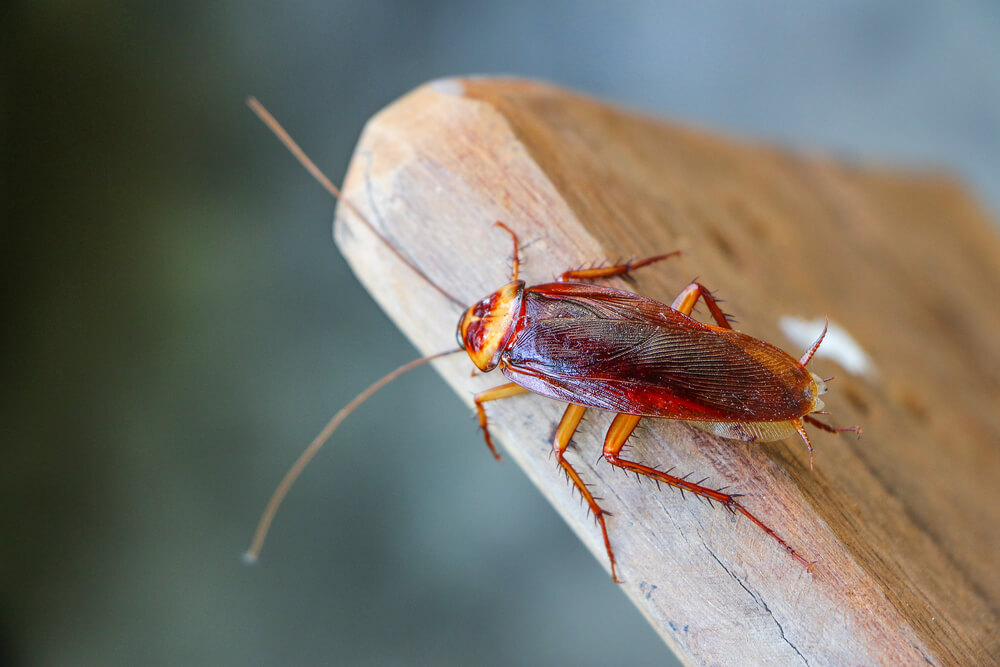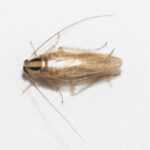Effective Cockroach Control: Tips and Techniques
Battling a cockroach infestation? Learn to recognize various species, comprehend their habits, and apply successful strategies to rid your abode of these nuisances.
Important
- Identifying the species of cockroaches is essential for effective pest management, with common types including German, American, Oriental, and Brown-banded cockroaches.
- Understanding cockroach behavior, such as their nocturnal habits and preferred hiding spots, helps in implementing targeted control measures.
- Preventing cockroach infestations requires effective sanitation practices, exclusion techniques to seal entry points, and using appropriate pest control solutions.
Identifying Different Cockroach Species
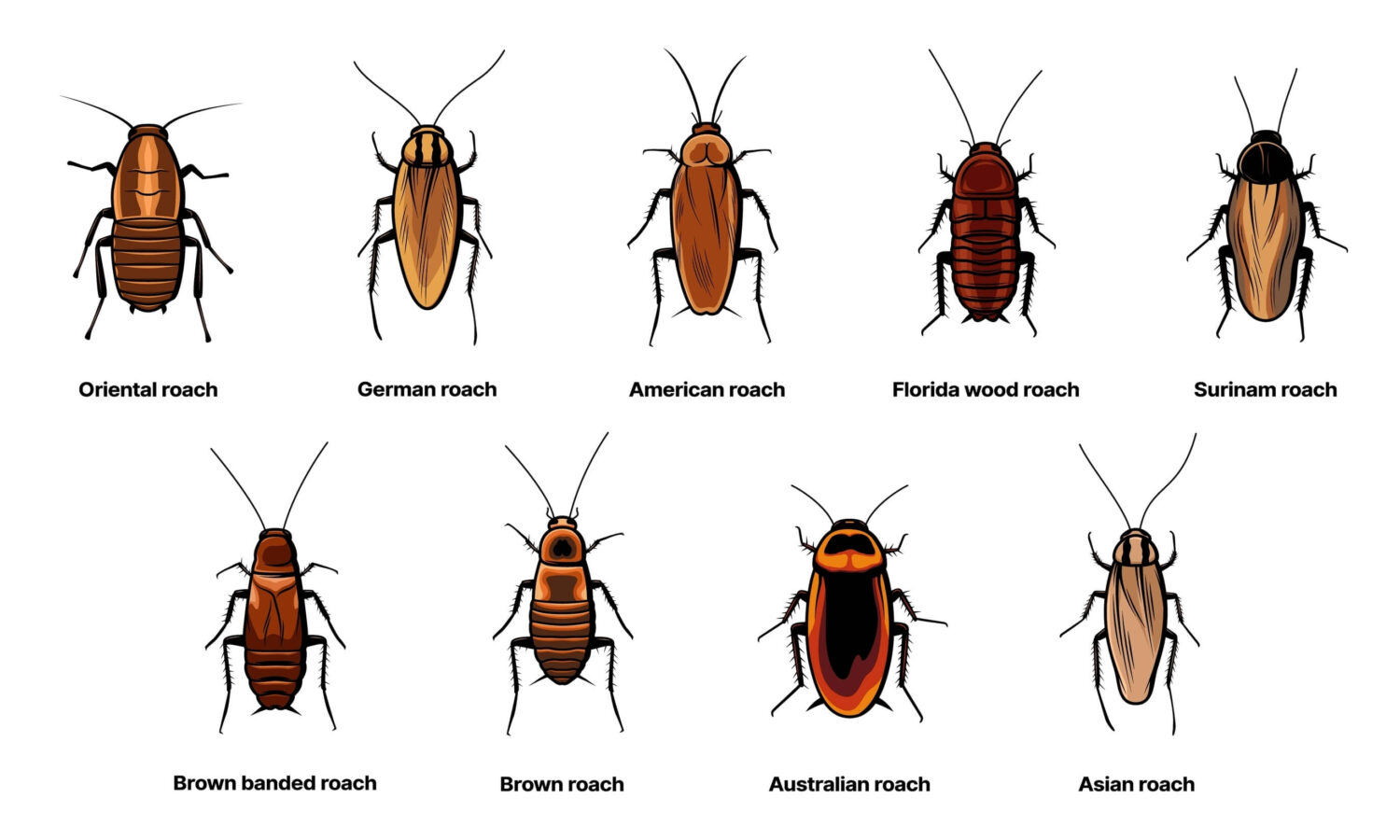
Dealing with cockroach infestations can be overwhelming, yet the initial action for successful eradication is to pinpoint which species of cockroaches have encroached on your environment. In Illinois, typical offenders are the German, American, Oriental, and Brown-banded varieties. Recognizing each type’s distinct traits and habits is essential in applying a focused approach to pest management.
German Cockroach
Commonly encountered in both residential and business settings, German cockroaches are infamous pests. Exhibiting a light brown or bronze hue, they are on the smaller side as far as insects go, usually spanning from half an inch to 5/8 of an inch in length. These rapid breeders can significantly infest a space due to females generating anywhere between 30-48 eggs per case and bearing them almost until they hatch.
The elusive nature of these roaches is enhanced by the fact that they spend approximately three-quarters of their existence concealed from view.
American Cockroach
Among cockroach species inhabiting residential areas, the American cockroach stands out as one of the largest, with individuals reaching lengths of up to 2 inches. These roaches exhibit a distinctive reddish-brown hue and are characterized by lighter-colored margins on their thoraxes. They have an affinity for shadowy and moist locations like cellars, sewer systems, and particularly boiler rooms. Commercial establishments such as restaurants and supermarkets frequently encounter these pests.
The life cycle of American cockroaches spans approximately 15 months from egg stage to full maturity. This growth duration enables them to give rise to several new generations each year.
Oriental Cockroach
Recognizable by their glossy black exterior, oriental cockroaches can reach lengths of up to 1 1/4 inches. They favor cool and damp surroundings like basements, crawl spaces, and garages for habitation. The males of the species possess wings that cover half of their abdomen, in contrast to females which are equipped with mere stubs for wings.
They have a propensity for moist areas and are frequently found in places suffering from inadequate drainage or those affected by water leaks.
Brown-banded Cockroach
The Brown-banded cockroach is a smaller species, about half an inch long, with a light brown color and distinctive bands across its body. These cockroaches prefer warmer temperatures around 80°F and are often found in dry, elevated areas such as electronics and light fixtures.
Female Brown-banded cockroaches cannot fly, unlike males, and their nymphs are darker with cream-colored bands.
Understanding Cockroach Behavior
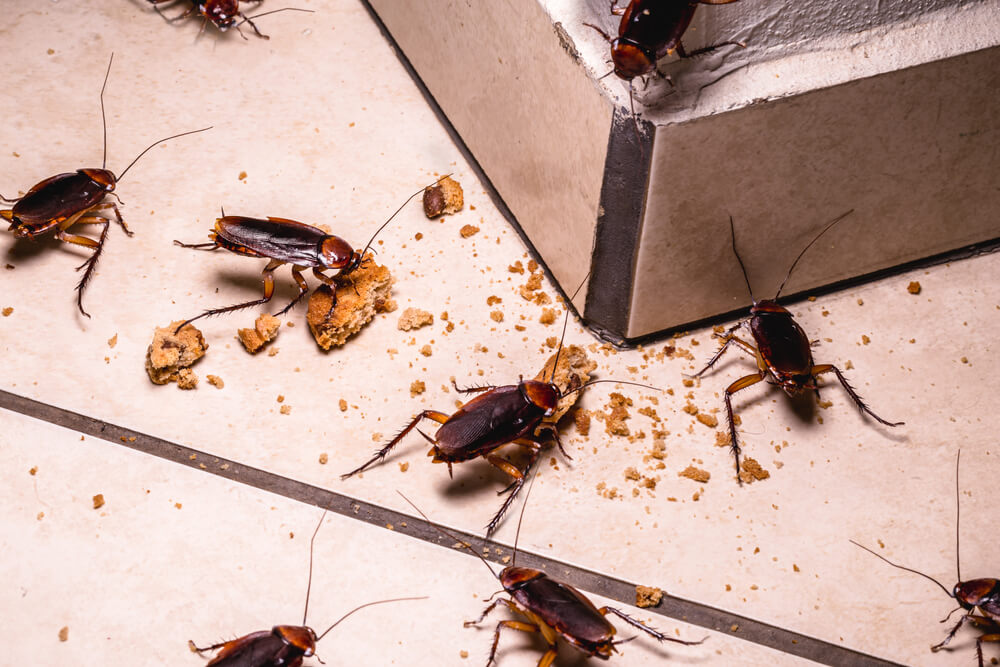
Understanding cockroach behavior is key to effective control of infestations. Cockroaches are nocturnal, seeking food, water, and shelter in dark, warm, and moist environments.
They quickly scatter when disturbed, making them hard to catch.
Nocturnal Insects
During the day, cockroaches seek refuge and only come out at night to search for sustenance such as sugar-rich items, starch-laden foods, leftover meat scraps, oily spots, and cheese that is not chilled.
Their nightly habits serve the dual purpose of eluding predators and minimizing their time in light.
Social Structures
The German cockroach demonstrates sophisticated social behaviors and organizational patterns. They cohabitate and use chemical cues to communicate, depending on mutual interaction for their survival.
Understanding these communal systems can be beneficial in formulating enhanced strategies for pest control.
Hiding Places
They hide in dark, warm, undisturbed areas like behind kitchen appliances, inside cabinets, and under furniture. These hiding spots provide the shelter necessary for them to thrive.
Inspecting these common hiding places is crucial for effective professional pest control.
The Cockroach Life Cycle
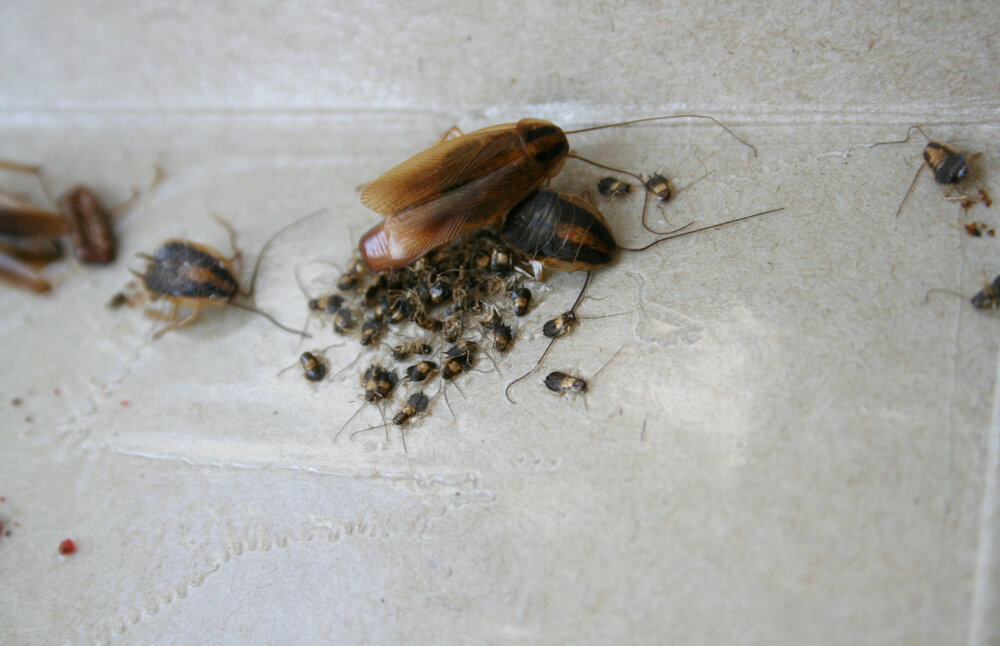
Understanding the life cycle of cockroaches, which consists of egg, nymph, and adult stages, is crucial for their successful control. Managing infestations requires tailored approaches at each distinctive stage to effectively tackle these pests.
Egg Capsules
Oothecae are the protective cases in which cockroaches deposit their eggs, and each can house as many as 40 offspring. The appearance of these egg capsules, including their color and shape, differs among species. Those from Oriental cockroaches tend to be dark brown with a rounded contour.
By keeping an eye out for and recognizing these egg casings, one can detect signs of potential infestations early on and take steps to avoid them.
Nymph Development
The nymph stage, lasting about one to three months, is a critical phase in the cockroach nymphs life cycle as they molt and grow. Nymphs undergo multiple molting cycles before reaching adulthood, maturing over several weeks.
Significant transformation and increased activity mark this stage.
Adult Roaches
Adult cockroaches can survive for several months in optimal conditions. In ideal conditions, they may live up to a year. Food availability, temperature, and humidity are key factors affecting their lifespan. These factors significantly impact their lifespan.
Depending on the species, cockroach egg cases can contain 10 to 50 eggs, with incubation periods ranging from 14 to 100 days.
Why Cockroaches Invade Homes

Cockroaches infiltrate residential spaces mainly to find sustenance, hydration, and a place of refuge. They exploit numerous access points such as fissures in the infrastructure, crevices surrounding doors and windowsills, along with other diminutive apertures for entry.
Understanding these motivations is key in averting cockroach incursions.
Food Sources
Cockroaches are drawn to homes by food sources such as crumbs, waste, and decomposing organic materials. Once inside, they may taint food and the areas where food is prepared with pathogens that can cause health issues like food poisoning.
Moist Areas
Cockroaches depend on moisture for their survival and proliferation. They frequently find this necessary moisture in humid locations such as kitchens and bathrooms, as well as from leaks originating from pipes and fixtures or floor drains.
Such damp environments provide perfect conditions for cockroach populations to grow exponentially.
Shelter Needs
Cockroaches are drawn to the warmth and moisture found in places such as bathrooms and kitchens, which serve as perfect hiding spots. These locations offer them the requisite refuge that supports their survival and reproduction capabilities.
Preventing and Controlling Cockroach Infestations
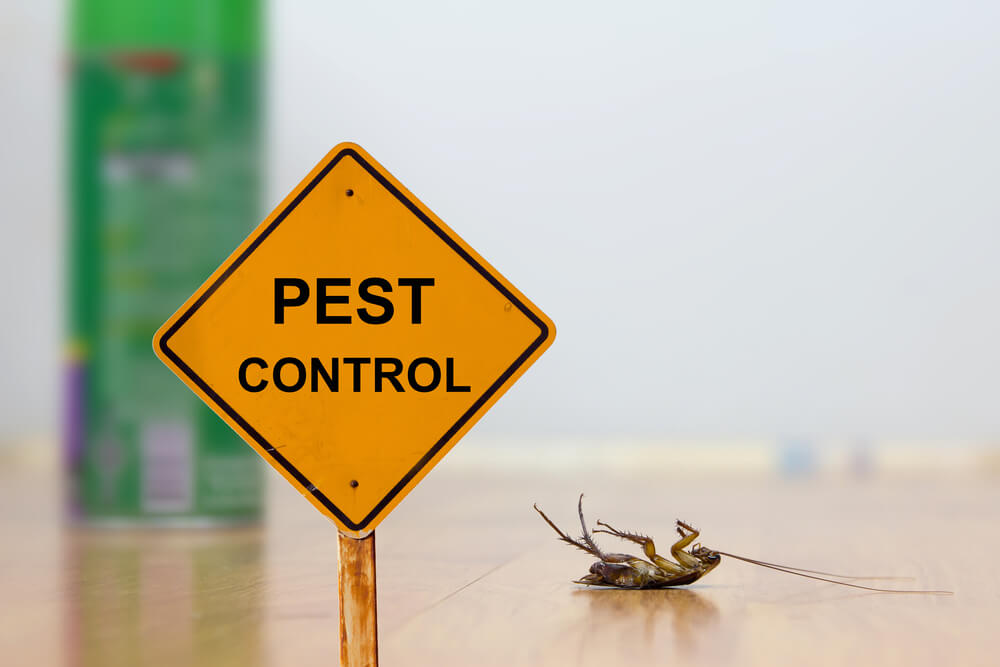
Combining sanitation measures, exclusion methods, and pest control treatments effectively prevents and manages cockroach infestations, leading to a substantial decrease in cockroach populations.
Sanitation Practices
Maintaining cleanliness by promptly addressing food spills, removing crumbs, and decluttering can significantly help in averting cockroach infestations. It’s equally important to frequently dispose of garbage and be certain that pet food isn’t accessible to cockroaches as a preventative measure.
Exclusion Techniques
To prevent cockroaches from infiltrating your home, it’s essential to employ exclusion tactics such as patching up any cracks, fissures, and openings. Using substances like silicone sealant or urethane foam can efficiently seal these breaches. Conducting consistent examinations of the outer structure of the building is crucial for detecting and rectifying possible ingress locations.
Pest Control Solutions
Several methods exist for controlling cockroach populations, including the use of insect growth regulators that hinder their maturation process. Professionals and do-it-yourself advocates alike often utilize boric acid as an effective pest control substance. Bait stations are strategically placed in areas where cockroaches are most active to lure and exterminate them.
DIY Cockroach Elimination Methods
For individuals who opt for a do-it-yourself approach to deal with cockroach invasions, numerous effective tactics exist. The initial action in managing cockroach populations is identifying the indications of an infestation.
Cockroach Baits
Using food combined with insecticide, cockroach baits lure roaches and permit them to transport the toxic substance back to their nests, effectively eradicating the entire colony. Placing these baits strategically in areas where there is a lot of cockroach activity proves to be highly efficient.
Sticky Traps
Utilizing non-toxic sticky traps is an effective strategy for trapping a range of crawling and flying insects, which aids in tracking pest populations. By strategically positioning these traps near typical hiding places, it becomes possible to detect and manage the presence of cockroaches.
Diatomaceous Earth
As a natural and non-toxic substance, diatomaceous earth is highly effective at causing dehydration and death in cockroaches by damaging their exoskeletons. It is an outstanding option for do-it-yourself pest control, especially since it’s safe to use around children and pets when applied correctly.
Signs of a Cockroach Infestation
It is essential to identify signs of cockroach infestation early to act swiftly. Typical signs include the presence of live or deceased cockroaches, detecting their droppings, and uncovering egg cases as well as shed skins.
Droppings
Cockroach droppings are typically small, dark, and resemble pepper or coffee grounds. These droppings can be found in kitchens, bathrooms, and areas near their nests.
Identifying droppings in secluded or dark areas helps pinpoint cockroach activity.
Musty Odor
The presence of cockroaches is often signalled by a potent, musty odor that becomes more pronounced with the size of the infestation. It’s crucial to identify and address this unpleasant smell swiftly as it denotes an escalating issue.
Egg Cases and Skins
The finding of capsule-like egg cases and discarded skins is a definite sign that cockroach activity is taking place. These dark, oval-shaped casings represent the reproductive processes of cockroaches and warrant vigilant monitoring.
When there are both egg cases and shed skins present, it points to an ongoing issue with cockroaches—this active infestation calls for prompt intervention.
Condensed Version
To effectively manage cockroach infestations, it is vital to comprehend the distinct behaviors and life cycles of various cockroach species. Differentiating between common types such as the German cockroach and the American cockroach enables you to tailor pest control measures more precisely. By understanding that these pests seek out homes for sustenance, water, and shelter, proactive prevention becomes possible.
A multifaceted approach towards controlling roaches incorporates thorough cleanliness practices with physical barriers and targeted pest management options. Strategies should include securing any openings in structures by filling cracks and crevices while using techniques like insect growth regulators alongside bait stations designed for sustained effects on reducing roach populations. For those pursuing a do-it-yourself path in combating these insects, employing tactics such as spreading diatomaceous earth or setting up sticky traps can offer considerable benefits without professional intervention.
Maintaining vigilance against invasions by promptly identifying signals of an infestation – including sightings of feces or egg cases – is critical for immediate response action. Knowledge about potential signs paired with preventive diligence acts as your best defense in keeping your living space devoid of these stubborn invaders.
Frequently Asked Questions
What are the most common types of cockroaches in homes?
The most common types of cockroaches found in homes are the German cockroach, American cockroach, Oriental cockroach, and Brown-banded cockroach.
It is important to be aware of these species for effective pest management.
How can I prevent cockroaches from entering my home?
To substantially diminish the chances of a cockroach infestation, it’s crucial to enforce rigorous sanitation measures, meticulously seal any potential entry points like cracks and crevices, and implement pest control methods including the use of bait stations and insect growth regulators.
By adhering to these precautions, you will effectively block cockroaches from invading your living space.
What are the best DIY methods for eliminating cockroaches?
The most efficient do-it-yourself approaches for eradicating cockroaches involve the use of cockroach baits, sticky traps, and diatomaceous earth.
These tactics are specifically designed to attack these pests head-on and help manage their proliferation.
How can I tell if I have a cockroach infestation?
You can determine if you have a cockroach infestation by observing live or dead cockroaches, finding droppings, detecting a musty odor, and discovering egg cases or shed skins.
Taking action promptly is essential if you notice these signs.
Why do cockroaches invade homes?
Cockroaches invade homes mainly to seek food, water, and shelter, as they can easily enter through small openings in search of these necessities.
This underscores the importance of maintaining cleanliness and sealing potential entry points to deter them.
